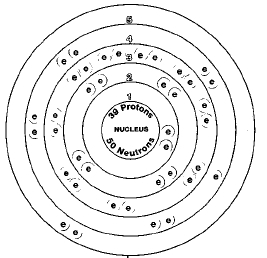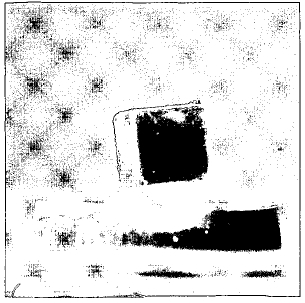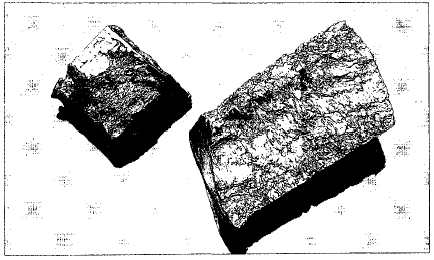YTTRIUM


Overview
Yttrium is one of four elements named for the same small town of Ytterby, Sweden. The other three elements are erbium, terbium, and ytterbium. The element was discovered in 1794 by Finnish chemist Johan Gadolin (1760-1852). The discovery of yttrium marked the beginning of one hundred years of complicated chemical research that resulted in the discovery often new elements.
Yttrium is a transition metal. Transition metals are those elements in Groups 3 through 12 of the periodic table. The periodic table is a chart that shows how chemical elements are related to each other. The element above yttrium in the periodic table is scandium. The space below yttrium is taken up by a group of elements known as the rare earth elements. Scandium, yttrium, and the rare earth elements are often found together in nature.
SYMBOL
Y
ATOMIC NUMBER
39
ATOMIC MASSY
88.9059
FAMILY
Group 3 (IIIB)
Transition metal
PRONUNCIATION
I-tree-um
Yttrium is often used to make alloys with other metals. An alloy is made by melting and mixing two or more metals. The mixture has properties different from those of the individual metals. Two of yttrium's most interesting applications are in lasers and superconducting materials.
A laser is a device for producing very bright light of a single color. One of the most popular lasers is made of yttrium, aluminum, and garnet. Garnet is a gem-like material with a sand-like composition. Superconducting materials are substances with no resistance to the flow of an electric current. An electric current that begins to flow through them never stops. Superconducting materials may have many very important applications in the future.
Discovery and naming
In 1787, a lieutenant in the Swedish army named Carl Axel Arrhenius (1757-1824) found an interesting new stone near Ytterby. He gave the stone to Gadolin for analysis. At the time, Gadolin was professor of chemistry at the University of Abo in Finland. Gadolin decided that Arrhenius' rock contained a new element. That element was later given the name yttrium.
For about fifty years, nothing new was learned about yttrium. Then Swedish chemist Carl Gustav Mosander (1797-1858) discovered that yttrium was not a single pure substance. Instead, it was a mixture of three new substances. In addition to Gadolin's yttrium, Mosander found two more elements. He called these elements terbium and erbium.
From that point on, the story of yttrium continued to get more and more complicated. As it turned out, neither terbium nor erbium was a pure element. Both new "elements" also contained other new elements. And these new "elements," in turn, contained other new elements. In the end, the heavy black mineral found by Arrhenius resulted in the discovery of ten new elements! (See the individual entries for the nine other elements: dysprosium, erbium, gadolinium, holmium, lutetium, scandium, terbium, thulium, and ytterbium. )
Physical properties
Yttrium has a bright, silvery surface, like most other metals. It is also prepared as a dark gray to black powder with little shine. Yttrium has a melting point of 1,509°C (2,748°F) and a boiling point of about 3,000°C (5,400 F). Its density is 4.47 grams per cubic centimeter.
Chemical properties
The chemical properties of yttrium are similar to those of the rare earth elements. It reacts with cold water slowly, and with

Solid yttrium metal does not react with oxygen in the air. However, it reacts very rapidly when in its powdered form. Yttrium powder may react explosively with oxygen at high temperatures.
Occurrence in nature
Yttrium is a moderately abundant element in the Earth's crust. Its abundance is estimated to be about 28 to 70 parts per million. That makes yttrium about as abundant as cobalt, copper, and zinc. As with other elements, the abundance of yttrium is quite different in other parts of the solar system. Rocks brought back from the Moon, for example, have a high yttrium content.
Rocks brought back from the Moon have a high yttrium content.
Yttrium occurs in most rare earth minerals. A rare earth mineral contains one or more—usually many—of the rare earth elements. The most important rare earth mineral is monazite. Monazite occurs in many places in the world, especially Brazil, Australia, Canada, and parts of the United States. Typically, monazite contains about 3 percent yttrium.
Making machines work more efficiently
O ne of the important new uses for yttrium is in superconductors. Superconductors were first discovered by Dutch physicist Heike Kamerlingh-Onnes (1853-1926) in 1911. Kamerlingh-Onnes found that certain metals cooled to nearly absolute zero lost all resistance to an electric current. Absolute zero is the coldest temperature possible, about -273°C. Once an electric current got started in these very cold metals, it could keep going forever. These metals were called superconductors.
Research on superconductors did not advance very much for seventy years. It is very difficult to produce temperatures close to absolute zero, and it is difficult to work with materials at these temperatures.
Then, in 1986, a startling announcement was made. Two scientists at the IBM Research Laboratories in Zurich, Switzerland, had made a material that becomes superconducting at 35 degrees above absolute zero. That temperature, -238°C, is still very cold, but it is much "warmer" than the temperature at which Kamerlingh-Onnes had worked.
An even bigger jump was announced only a year later. A team of researchers working under Ching-Wu "Paul" Chu (1941-) produced superconductors that worked at 90 to 100 degrees above absolute zero. These temperatures are also still very cold, but they broke an important barrier. Those temperatures are close to the temperature of liquid nitrogen. Scientists have known how to make and work with liquid nitrogen for several hundred years. It had now become easy to work with superconducting materials.
These "high-temperature" superconducting materials are very interesting. In the first place, they are not metals. They are ceramics. A ceramic is a clay-like material. It often consists of sand, clay, brick, glass or a stone-like material.
In the second place, the composition of these materials is difficult to determine. They usually contain barium, copper, lanthanum, yttrium, and oxygen. They often contain other elements. But they are not simple compounds, like copper oxide (CuO) or yttrium oxide (Y203). Instead, they are complex mixtures of the elements.
Superconductors may be very important materials in the future. Electrical machinery usually does not operate very efficiently. The electric current has to work hard to overcome resistance in wires and other parts of the machinery. A lot of the electrical energy is lost because of this resistance. The electrical energy turns into heat.
In a machine made of superconducting materials, the electrical current would meet no resistance at all. All of the electrical energy could be used productively. It could make the machine operate, rather than being lost as heat.
Isotopes
There is only one naturally occurring isotope of yttrium, yttrium-89. Isotopes are two or more forms of an element. Isotopes

About a dozen radioactive isotopes of yttrium are known also. A radioactive isotope is one that breaks apart and gives off some form of radiation. Radioactive isotopes are produced when very small particles are fired at atoms. These particles stick in the atoms and make them radioactive.
Yttrium phosphors have long been used in color television sets and in computer monitors.
None of the radioactive isotopes of yttrium has any important commercial use. However, yttrium-90 is now being tested as a treatment for cancer. Radiation given off by the isotope kills cancer cells. Researchers believe that yttrium-90 may find wider use in the future for treating cancer. One advantage of using this isotope is that is easy to obtain. It is produced when another radioactive isotope (strontium-90) breaks down. Strontium-90 is a by-product formed in nuclear power plants.
Extraction
Yttrium is usually bought and sold in the form of yttrium oxide (Y
2
O
3
). However, the pure metal can be obtained by combining another compound
of yttrium, yttrium fluoride (YF
3
), with calcium metal at high temperatures:
Uses
Traditionally, yttrium has had many of the same uses as the rare earth elements. For example, it has been used in phosphors. A phosphor is a material that shines when struck by electrons. The color of the phosphor depends on the elements of which it is made. Yttrium phosphors have long been used in color television sets and in computer monitors. They have also been used in specialized fluorescent lights. In 1996, about two-thirds of all the yttrium consumed was used for these purposes.
Yttrium alloys have some special uses as well. These alloys tend to be hard, resistant to wear, and resistant to corrosion (rusting). They are used in cutting tools, seals, bearings, and jet engine coatings. Slightly less than a third of all yttrium used in 1996 went to applications like these.
One of the areas in which yttrium is becoming more important is in the manufacture of lasers. Lasers are devices for producing very intense beams of light of a single color. These beams are used for precision metal cutting and surgery. There is some hope that lasers may someday replace the dental drill.
One of the most widely used lasers today is the yttrium-aluminum-garnet (YAG) Laser. YAG Lasers often contain other elements. These elements change the kind of light produced by the laser in one way or another. The Laser is said to be doped with another element if it contains a small amount of that element. An example of this kind of laser is one doped with neodymium. The neodymium-doped YAG (Nd:YAG) laser has been used to make Long distance measurements.
There is some hope that lasers may someday replace the dental drill
In this kind of laser, a beam is fired at a far-away object. The time it takes for the beam to be reflected is then measured. The time is used to calculate the distance to the distant object. One application of this principle is used by space probes. For example, on February 17, 1996, the National Aeronautics and Space Administration (NASA) launched a spacecraft to observe the asteroid Eros. The back side of the asteroid will be measured with a Nd:YAG laser. Beams from the laser will be used to map surface features on the asteroid.
Compounds
The only yttrium compound of commercial interest is yttrium oxide (Y 2 O 3 ). Yttrium oxide is used to make phosphors for color television sets and in crystals used in microwave detection instruments.
The back side of the asteroid Eros will be measured with a neodymium-doped yttrium-aluminum-garnet (Nd:Yag) laser.
Health effects
Yttrium has been found to be toxic to laboratory rats in high doses. However, there is little information about its effects on humans. In such cases, an element is usually treated as if it were dangerous.